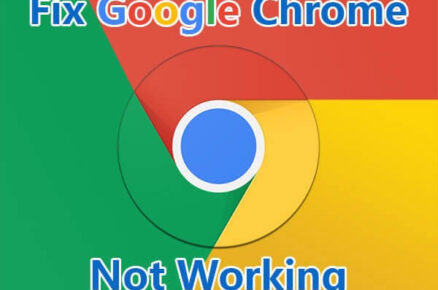Table of Contents
Introduction
The digital age has created a new celebrity class—“influencers.” From sharing their lifestyle and opinions, influencers gain social media follows on platforms such as Instagram, TikTok, YouTube, and Twitter. While many influencers utilize their platforms responsibly and ethically, some fit within the category of “influencers gone wild”—a phrase that represents everything from viral controversies to viral scandals, making headlines around the world. In this guide, we will explore the definition of influencer gone wild, famous examples, the impact of social media on influencer gone wild behavior, and the implications this has on the future of influencers as a whole.What Does “Influencers Gone Wild” Mean?
The phrase ‘influencers gone wild’ has no one definition but typically refers to moments where influencers behave in shocking, controversial, or unexpected ways. This may include: – Posting outrageous content for engagement. – Being involved in scandals such as cheating, lying or criminal behavior. – Having a viral meltdown on a live stream or social media. – Making outrageous challenges or stunts that spark debates. – Getting ‘canceled’ for offensive or problematic behavior. In short, influencers gone wild refers to moments when influencers push the limits of normal online behavior and create interest or buzz on multiple platforms; knowingly or not.Why Do Influencers Go Wild?
The psychology and business of influence invariably push creators to engage in egregious behavior. This is partially because: Pressure to Stay Relevant – With millions of creators online, influencers sometimes need to create shocking or daring content to cut through the clutter and prove their worth. Viral Culture – If influencers make a controversial post, other users on the social media platform reward them with likes and shares. Outrage spreads faster than positivity. Brand and Sponsorship Pressure – Some influencers cross boundaries to seal deals or maintain their fame. Lifestyle Exposure – Fame can bring wealth opportunities, a penchant for partying and excess, and ultimately reckless behavior and consequences. Cancel Culture – For some influencers, as long as they know that there is a chance of trending based on controversy and notoriety, they are willing to “go wild” for attention and notoriety.Famous Cases of Influencers Gone Wild
From Instagram to TikTok, there are many examples of influencers making the news quickly. Let’s look at some examples.1. TikTok Influencers Gone Wild
TikTok has provided lots of platforms for people to showcase creative, hilarious, and interesting viral trends but TikTok influencers gone wild take it a step further. Dangerous dance challenges on rooftops to eating ridiculous food from across TikTok, TikTok influencers gone wild often generate news coverage for the worst reasons.2. Instagram Influencers Gone Wild
Instagram influencers are often involved in scandals including fake luxury lifestyles, overly edited travel, etc. Some have been exposed for promoting scams or misleading people into being unattainable for the rest of us, for example. Not everything on Instagram is as glamorous as it appears to be.3. YouTube Influencers Gone Wild
YouTube might be the most wildly comprised of negative interactions with content creators, especially in regard to other influencers to date. Examples include many differences of opinion about pranks, disregard for life in dangerous stunts or riding the line for the sake of views. Some have faced touch from followers for reckless challenges from which they received attention or profiting from sensitive topics.4. Reddit Threads on Influencers Gone Wild
There are new communities regarding social media influencers gone wild which include horror stories and scandals from all platforms on Reddit influencers gone wild threads. These online discussions are exemplifying how the public seems to be elaborating the mistakes of the influencers.The Impact of Influencers Gone Wild on Audiences
When influencers lose it, the consequences can be felt throughout the entire social media ecosystem: Trust Concerns: People’s followers may lose their trust in influencers and unfollow them subsequently. Entertainment Value: Scandals usually result in elevated viewer count and trending influencers. Cultural Impacts: Public reactions shape how influencers conduct themselves afterward. Financial Costs: Brands discontinue their sponsorships at a cost of millions to influencers. Personal Effects: Influencers often deal with mental health issues that arise from their viral controversies.Positive vs Negative Side of Influencers Gone Wild
Not all wild behavior is bad. Sometimes it is about being creative and taking a risk. Positive Side: Fun and exciting (sometimes even boundary-pushing) can entertain and inspire. Negative Side: Destructive stunts, offensive commentary, and questionable marketing can ruin reputations.Why Do Audiences Love Influencers Gone Wild?
The reason people can’t stop absorbing content when influencers freak out is grounded in human psychology:- Drama & Curiosity – People love outrageous stories.
- Relatability – Seeing an influencer struggle makes the person watching feel like they’re more human.
- Schadenfreude – Some enjoy watching the big and powerful become the small and weak.
- Entertainment – Wild stories give good viral content that goes all over the internet for people to have discussions, memes, and commentary videos.
The Role of Cancel Culture
Cancel culture fits into the influencers gone wild issue in a major way. The influencer does something controversial, influencers trend hashtags, brands drop the influencer, and the influencer may or may not be affected adversely. There are influencers that deal with the backlash and recover and some influencers that face some consequences and disappear in the online space.How Brands React to Influencers Gone Wild
Brands spend large amounts of money for influencer marketing, but they tend to quickly retract if an influencer is involved in a scandal. Brand’s typical Options are:- Cancel contracts.
- Issue formal statements.
- Replace an influencer with lower risk influencer.
- Rebuild campaigns with a focus on trust.





